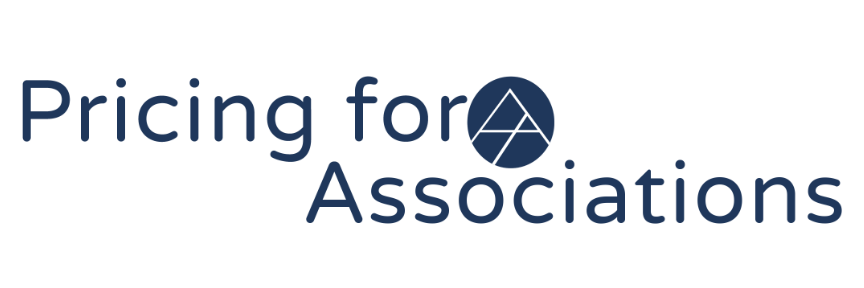The Art of Pricing: Expert Interviews for Association Strategy
In the world of association management, pricing strategy is a key factor that influences financial health, member satisfaction, and overall success. While surveys can provide valuable data on broad trends and member preferences, there’s another tool that offers even deeper insights: interviews. Interviews, when strategically used, can reveal nuanced perspectives, especially for sponsors, niche segments, and key accounts that may require customized solutions. Dr. Michael Tatonetti, a Certified Association Executive and Certified Pricing Professional, delves into the art of conducting pricing interviews, exploring their timing, structure, and specific considerations for different product categories.
The Timing and Purpose of Pricing Interviews
Unlike surveys, which are typically broad and can capture a lot of data quickly, interviews are more detailed and require time. However, this added depth is invaluable. Dr. Tatonetti emphasizes that pricing interviews are best conducted after surveys. Surveys offer quantitative insights, but interviews provide the opportunity for one-on-one interaction, free from group dynamics or biases that can sometimes emerge in a survey setting.
This method is particularly essential for associations that need insights from sponsors or niche member segments—groups that may not be adequately represented in broader surveys. By conducting interviews with these groups, associations can uncover unique needs, preferences, and pain points, leading to more tailored and effective pricing strategies.
Creating an Effective Interview Template
The key to conducting a successful pricing interview is crafting a template that strikes a balance between structure and flexibility. The interview should allow for open and honest conversations, while still covering all critical areas. Here’s a suggested template that Dr. Tatonetti offers:
1. Introduction and Assurance:
Begin by clearly explaining the purpose of the interview, ensuring that participants understand the value of their input.
Assure confidentiality to help interviewees feel comfortable providing candid feedback.
2. Personal Information:
Collect basic demographic information, such as the participant’s name, industry experience, and membership tenure. This helps provide context for their responses.
3. Pricing Questions:
General Perceptions of Product Value: Ask participants about their overall perception of the value your product or service offers.
Specific Pricing Scenarios: Explore situations where participants would find a price increase acceptable or unacceptable.
Open-ended Questions: Give room for participants to express what features or aspects of the product they feel could enhance its perceived value.
To enrich the pricing questions, consider using models like Van Westendorp's Price Sensitivity Meter or Conjoint Analysis. These tools help quantify perceptions of value and can provide deeper insights into the price sensitivity of different segments.
Tailoring Interview Questions for Different Product Categories
To ensure that the interviews provide the most relevant and actionable insights, it’s important to tailor questions based on the specific product category. Different types of offerings—such as membership, educational programs, certifications, events, and sponsorships—will have different pricing dynamics. Here’s how to approach each category:
Membership:
Explore willingness to pay for different membership tiers and what members perceive as valuable at each level. Understand the features that drive member loyalty and retention, and identify areas for improvement.
Education:
For educational offerings, ask about the importance of various formats (e.g., webinars, workshops, on-demand content) and which features or added services members are willing to pay more for.
Certification:
When discussing certification programs, explore both the perceived value and affordability of certifications. Understand how these programs contribute to members' professional development and how much they’re willing to invest in them.
Events:
Ask members about their expectations regarding event pricing models. Consider factors like virtual vs. in-person attendance, as well as the value they place on different event features such as networking opportunities, content quality, and access to industry leaders.
Sponsorship:
For sponsors, explore the perceived value of various sponsorship packages. Customize your questions to reflect their unique needs and expectations, such as exposure, benefits, and potential ROI.
Analysis and Implementation
The data gathered from interviews is qualitative, providing rich, detailed insights. However, it is critical that associations carefully analyze this data to uncover common themes, identify potential outliers, and determine actionable steps. This qualitative information can directly influence pricing adjustments, package modifications, and value proposition improvements.
For example, if multiple interviewees express a desire for more virtual event options, an association might consider adjusting pricing models to reflect the growing demand for virtual attendance. Alternatively, if sponsors indicate that certain benefits are undervalued in current sponsorship packages, associations can adjust the packages accordingly to ensure they are perceived as offering greater value.
Conclusion
Interviews are an invaluable tool in the intricate world of pricing strategy. They allow associations to dig deeper into the expectations and needs of key member segments, sponsors, and other stakeholders, providing insights that surveys alone cannot offer. By adopting a thoughtful interview template, customizing questions based on product categories, and analyzing the data effectively, associations can refine their pricing strategies to better align with member needs and market realities.
By incorporating these expert strategies into their pricing analysis, associations can craft pricing models that resonate with their members, foster stronger relationships, and ensure long-term success. Pricing, after all, is not just about numbers—it’s about understanding the value your offerings bring to your members and how you can continually adjust to meet their evolving needs.
Summary
Pricing interviews offer deep, qualitative insights into member and sponsor expectations. By tailoring questions to specific product categories and carefully analyzing responses, associations can refine their pricing strategies and deliver greater value. This nuanced approach ensures that pricing decisions are informed by both data and personal perspectives, leading to better outcomes for both the organization and its stakeholders.
Main Takeaways
Timing: Conduct interviews after surveys to gain deeper, bias-free insights.
Customization: Tailor questions to specific product categories to ensure relevance and depth in responses.
Analysis: Carefully analyze qualitative data to inform strategic pricing decisions and enhance value.


